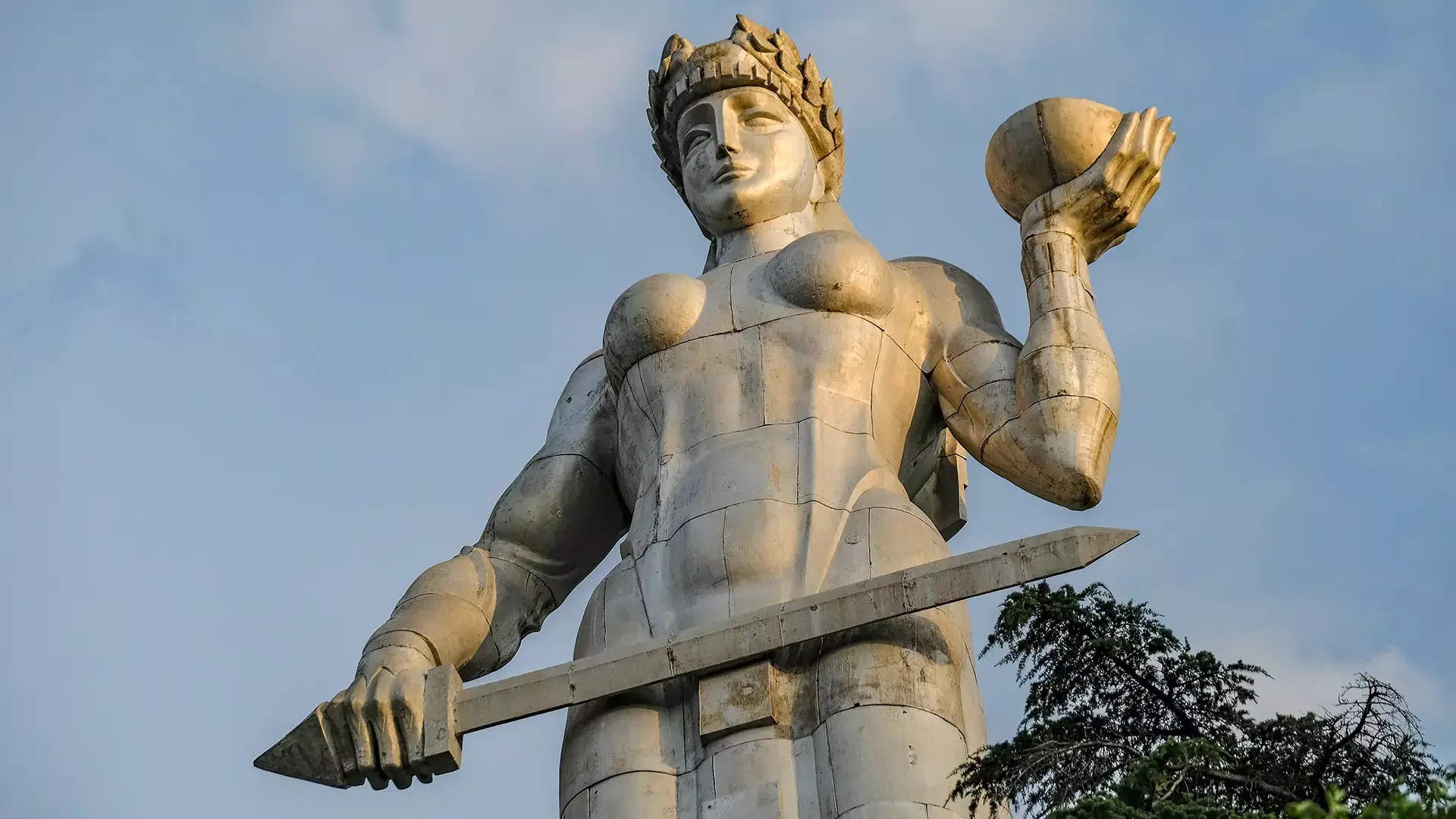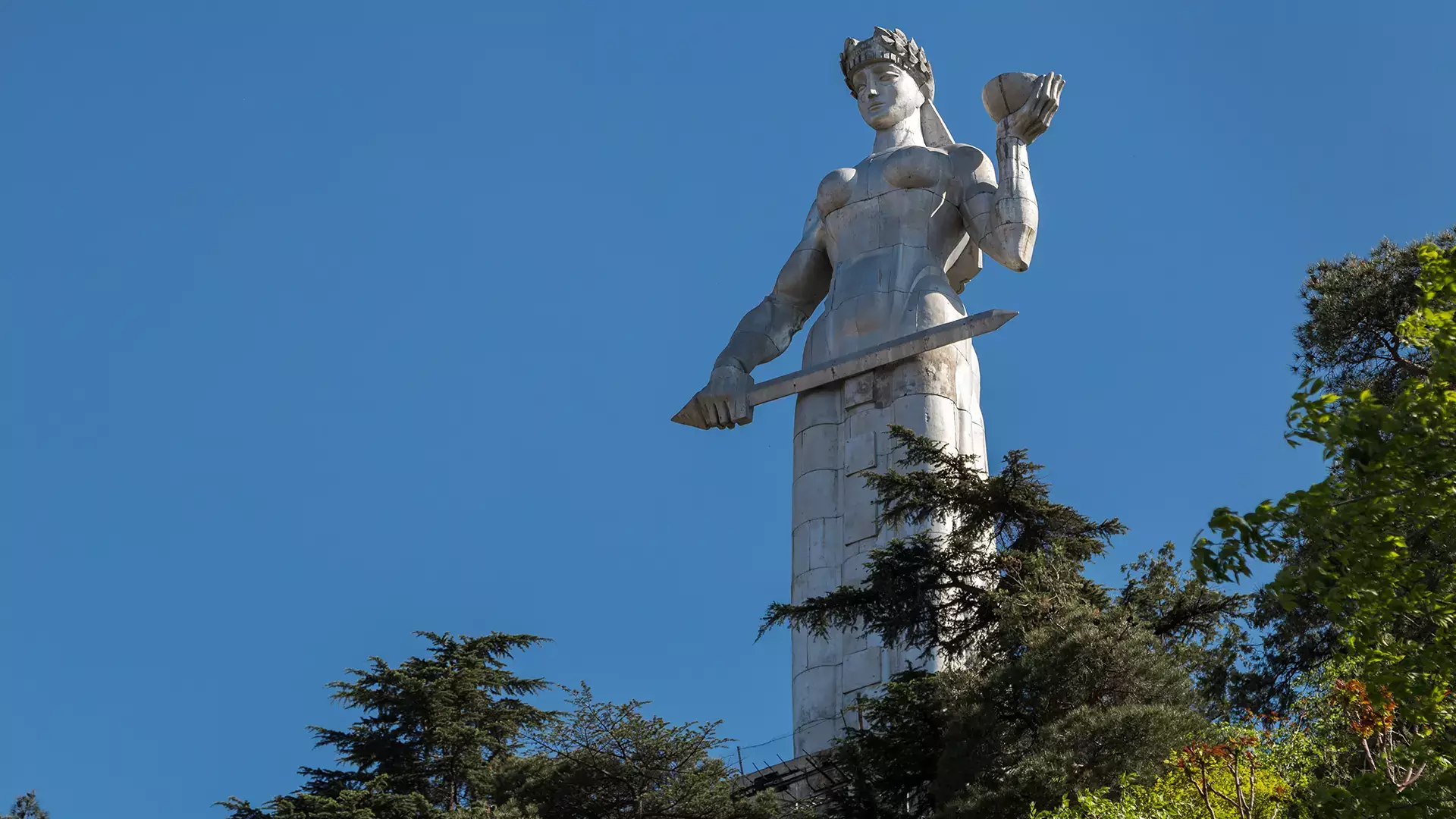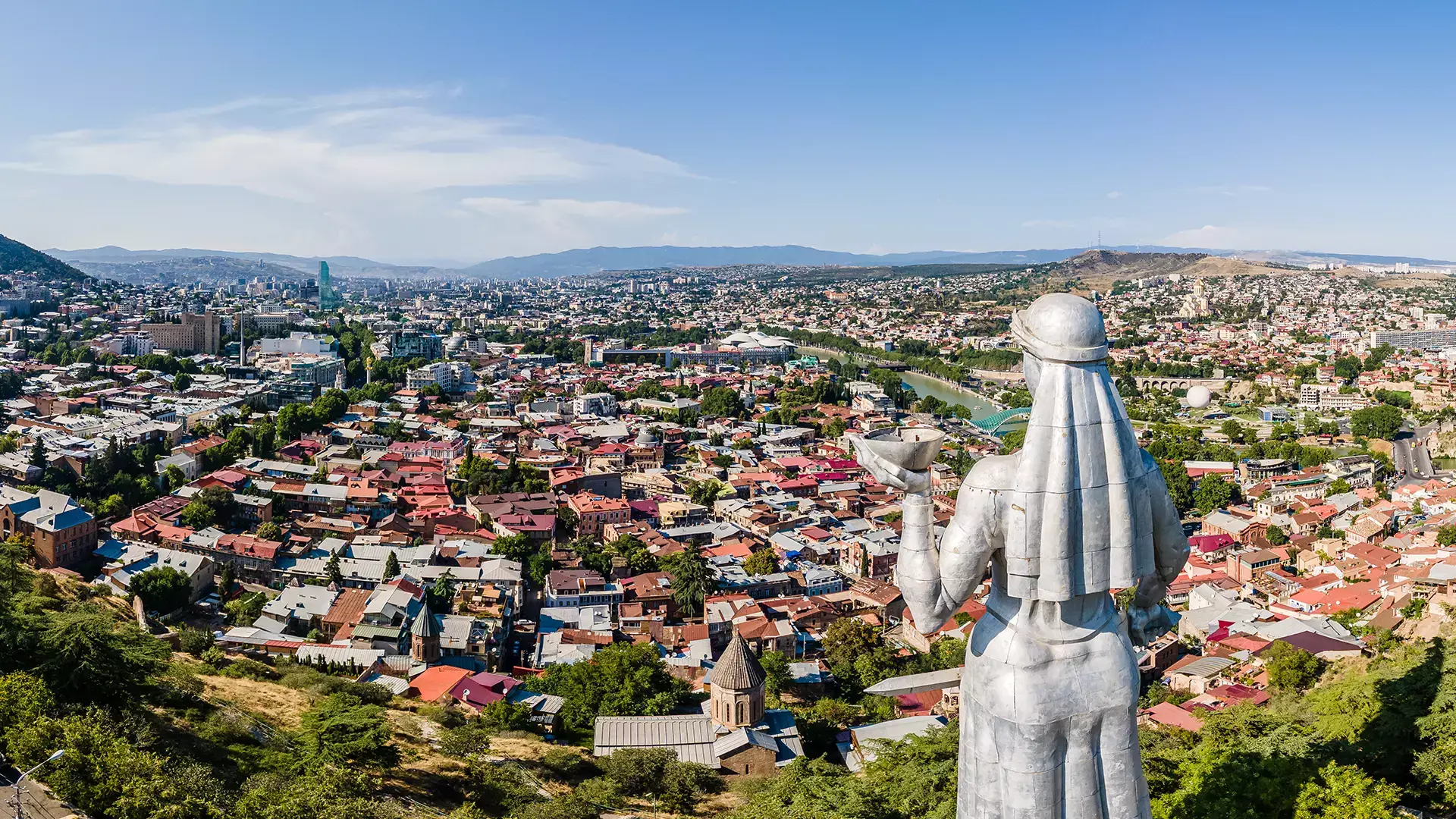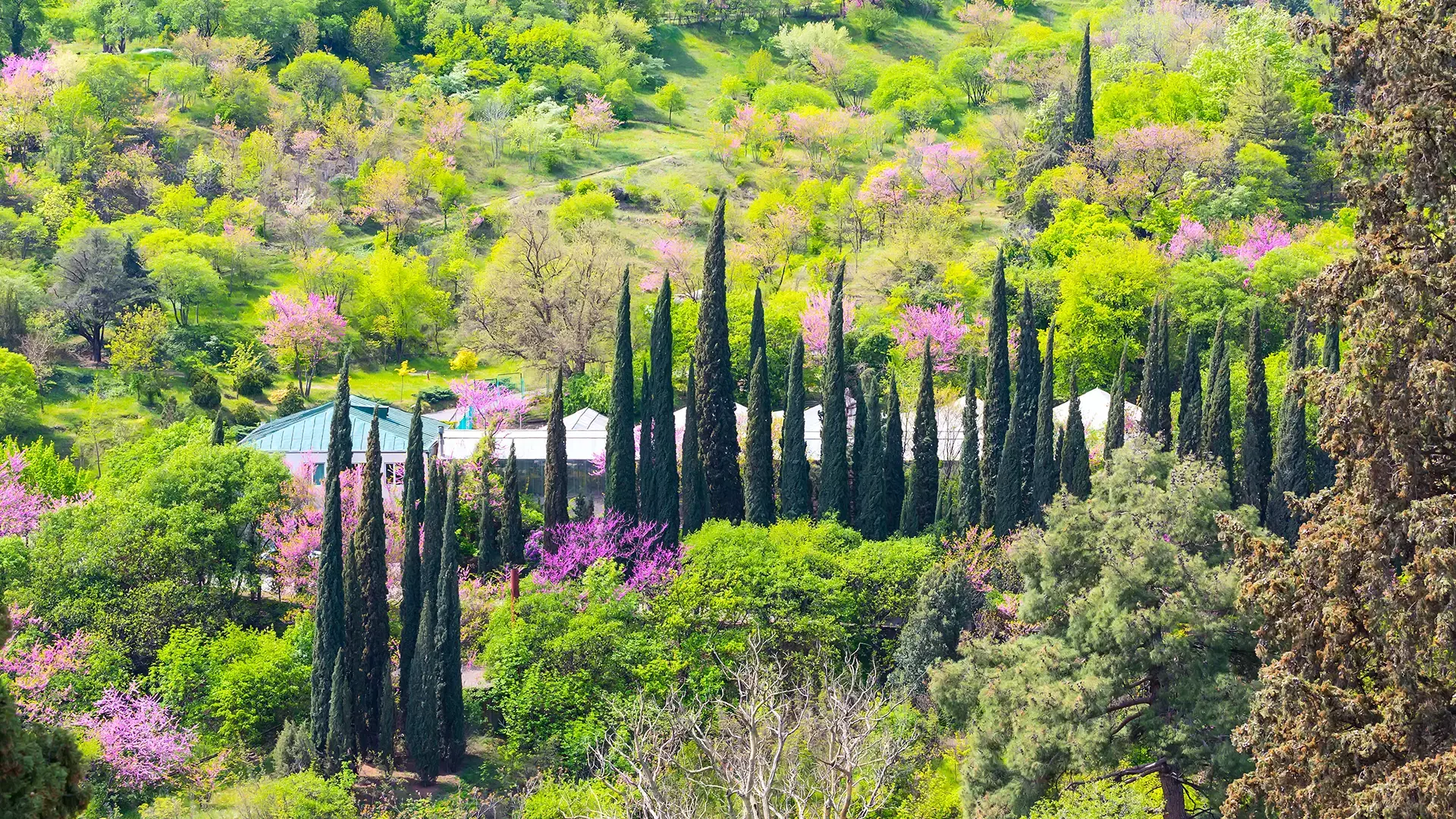Kartlis Deda - Mother of Georgia Statue
Kartlis Deda: The Iconic Mother of Georgia Statue
Kartlis Deda (translated into English as “Mother of Georgia”) is a monumental 20-meter aluminum statue overlooking the city from the top of Sololaki Hill.
This striking structure depicts a woman in traditional Georgian garb and can be seen from many miles away. In her left hand, she’s holding a bowl of wine symbolizing friendliness and hospitality, while in her right hand, she’s clutching a sword, representing a readiness to fight off enemies. This dichotomous sight reflects the main beliefs underpinning the Georgian national character - showing kindness towards good-natured guests, but prepared to be fiercely protective to thwart anyone wishing their homeland ill.
Mother of Georgia was designed by prominent Georgian sculptor and painter Elguja Amashukeli and was erected in 1958 to commemorate the 1500th anniversary of the founding of Tbilisi. Favoring simplicity, Amashukeli called the statue “Capital.” Later, the Georgian people started calling it “Kartlis Deda.” Eventually, this name became so widespread that the statue was officially renamed. The original composition sculpted by Amashukeli was made of wood and was supposed to be a temporary installation. But after it was received with such popularity, a decision was made to make the statue permanent. Therefore, in 1963 it was covered in aluminum to protect it against damage from natural conditions and other dangers. Notably, Amashukeli won the 1966 Shota Rustaveli State Prize for the sculpture. Decades later, to preserve this central feature of central Tbilisi’s skyline, the old statue was replaced with an identical new one in 1997.
Over the last half-century or so, Kartlis Deda has become an iconic symbol of not only Tbilisi but Georgia as a whole, embodying its culture, history, identity, and resilience.
How to Get to the Kartlis Deda Statue
The easiest and quickest way to reach the statue is to take the cable car from Rike Park to Narikala Fortress. The cable car generally runs from 10am to 10pm, but the operating hours may be longer in peak tourism season if the demand is high enough (ask a member of staff when the last car will descend from the upper station). Lasting around two minutes, the cable car ride takes you hilltop to Narikala Fortress, from which the statue is about a five-minute walk away.
Alternatively, for those feeling more energetic, you can hike up via the stairway on Betlemi Street. The route is a bit steep in places but well paved and scenic - along the way, you’ll see Jumah Mosque and Abanotubani bathhouses among other historic sites.
Especially in the warmer months, try to visit before noon or in the late afternoon to avoid big crowds and to get the best possible light for your panoramic photos of Georgia’s capital city.
What to See Near Kartlis Deda
A memorable attraction in her own right, Kartlis Deda stands near some of Tbilisi’s most famous landmarks:
Narikala Fortress - An ancient citadel located a five-minute walk from Kartlis Deda, on the same hilltop. The fortress dates back to the 4th century and features various historical remains, including narrow stairs you can climb to stand atop its walls and admire the staggering vistas.
Tbilisi Botanical Gardens: - Spanning 128 hectares, the garden contains over 3,500 plant species from all around the world. Among this serene site’s main attractions are a Japanese garden, a greenhouse, and a natural waterfall.
Abanotubani - This neighborhood is known for its centuries-old sulfur baths, easily recognizable due to their unique architecture. Most of the historic bathhouses here have round bricked domes popping out of the ground.
Old Tbilisi - The historic part of the city stands out for its steep, narrow, and often cobbled alleys, beautiful architecture, and thriving cultural scene. Some of the city’s most famous and beloved art galleries, cafes, and bars are found in this storied district.
Freedom Square - Generally considered to mark the true center of the city, the square is one of Tbilisi’s key logistical arteries. The square is a popular gathering place for locals and tourists alike and is within walking distance from many of the most famous Tbilisi sights.
The Bridge of Peace - A modern sight in an ancient district, this pedestrian bridge, made of glass and steel, crosses the Mtkvari (Kura) River. Designed by Italian architect Michele De Lucchi it’s known for its bow-shaped dome. This modern Tbilisi wonder is best to visit at night when the bridge is illuminated by 1,208 bright and often multi-colored LED lights.
Cookie Policy




